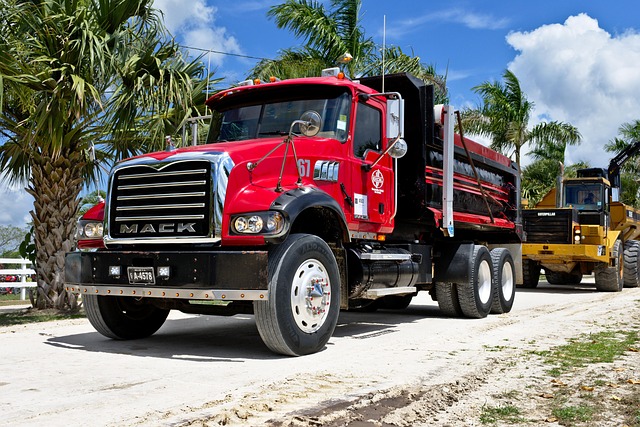Looking to register your car in California? Our step-by-step guide breaks down the process from start to finish. First, understand the state’s registration requirements for cars. Next, gather essential documents for a crucial VIN (Vehicle Identification Number) verification. After passing the check, select the right registration class and pay associated fees. Finally, submit applications and get your license plate. Ensure a smooth process by following these key steps, including important vin verification procedures.
- Understand California Car Registration Requirements
- Gather Necessary Documents for VIN Verification
- Perform Vehicle Identification Number (VIN) Check
- Choose an Appropriate Registration Class and Pay Fees
- Submit Applications and Receive Your License Plate
Understand California Car Registration Requirements

Before registering your car in California, it’s crucial to understand the state’s specific requirements. One key aspect is ensuring accurate and up-to-date information on your vehicle, starting with a valid Vehicle Identification Number (VIN) verification. This unique 17-character code serves as the car’s fingerprint and is essential for identifying its make, model, year, and other specifications.
In California, you’ll typically need to undergo a VIN inspection to validate your vehicle’s details. While traditional inspection stations are available, many residents opt for convenient alternatives like mobile vin verification services. These services bring the inspection process directly to your location using specialized equipment and trained professionals, making it easier than ever to fulfill your car registration obligations.
Gather Necessary Documents for VIN Verification

Before you begin the registration process, it’s crucial to gather all the essential documents for VIN (Vehicle Identification Number) verification. This step is a critical part of ensuring your vehicle’s history and authenticity are accurately represented. You’ll need your vehicle’s registration certificate from the previous state, if applicable, along with proof of ownership, such as a title document or bill of sale. Don’t forget to bring your driver’s license or ID card for identification purposes.
For a streamlined process, consider utilizing mobile VIN verification services that offer on-site inspections. These services send a professional to your location to perform the vin inspection, saving you time and effort. This is especially beneficial if you have unique or classic vehicles that may require additional documentation or if you’re unsure about the necessary steps.
Perform Vehicle Identification Number (VIN) Check

Before registering your car in California, it’s crucial to perform a Vehicle Identification Number (VIN) check. This step is essential for ensuring that the vehicle is legitimate and has not been reported as stolen or had its identity altered. A mobile VIN verifier can facilitate this process by providing on-site inspections, making it more convenient than traditional methods. With their portable technology, these verifiers can quickly cross-reference your car’s unique VIN number with national databases to deliver immediate results.
A mobile VIN inspection ensures a thorough and accurate verification, which is especially important given California’s stringent vehicle regulations. This service is particularly beneficial for individuals who purchase used cars, as it offers peace of mind and helps prevent potential legal issues down the line. By utilizing a mobile vin verification service, you can streamline the registration process and have your car on the road in no time while adhering to all necessary safety and regulatory standards.
Choose an Appropriate Registration Class and Pay Fees

When registering your car in California, understanding the appropriate registration class is key. Different types of vehicles require specific considerations based on factors like age, use, and environmental impact. For instance, classic cars or vehicles over 25 years old may qualify for lower fees and simplified registration processes. Conversely, newer models or high-emission vehicles might fall into different categories with correspondingly higher costs.
After determining the right class, you’ll need to pay the associated fees. California’s Department of Motor Vehicles (DMV) outlines these charges clearly. Keep in mind that additional costs may apply if you opt for specialized services like a mobile vin verifier or vin inspection. These can ensure accurate vehicle identification number (VIN) verification, which is crucial for a seamless registration process. Through the vin verification procedure, you can confirm your car’s authenticity and history, a step highly recommended to prevent fraud and ensure compliance with state regulations.
Submit Applications and Receive Your License Plate

After completing your vehicle’s registration application, it’s time to submit all required documents and receive your license plate. This involves a critical step known as vin verification, where the unique identifier on your vehicle’s VIN (Vehicle Identification Number) is checked against state records to ensure authenticity. You can opt for a traditional vin inspection at a designated location or leverage convenient mobile vin verification services that come to you.
The process typically includes filling out an application form and submitting it along with relevant fees, your driver’s license, proof of insurance, and the vehicle’s title. Once approved, the California Department of Motor Vehicles (DMV) will issue your license plate. With these steps, your car registration is complete, ensuring a smooth ride on California’s roads.
Registering a car in California involves understanding state requirements, gathering essential documents for VIN verification, conducting a vehicle inspection, selecting the right registration class, and paying associated fees. After completing these steps, you can submit your applications and receive your license plates, ensuring your vehicle complies with California’s regulations. Remember, a successful registration process begins with meticulous preparation, especially during the crucial vin verification stage.
